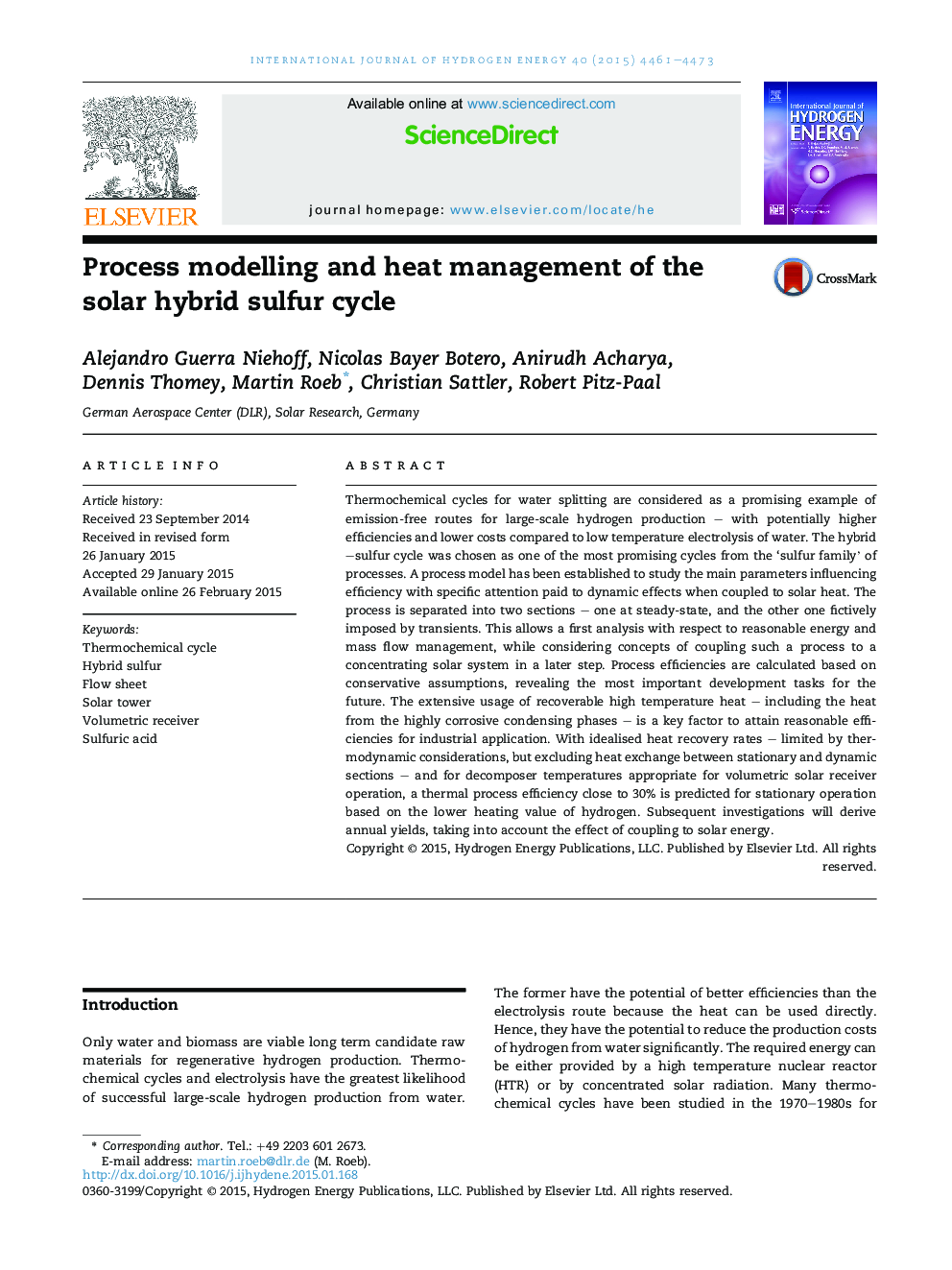| Article ID | Journal | Published Year | Pages | File Type |
|---|---|---|---|---|
| 7715805 | International Journal of Hydrogen Energy | 2015 | 13 Pages |
Abstract
Thermochemical cycles for water splitting are considered as a promising example of emission-free routes for large-scale hydrogen production - with potentially higher efficiencies and lower costs compared to low temperature electrolysis of water. The hybrid-sulfur cycle was chosen as one of the most promising cycles from the 'sulfur family' of processes. A process model has been established to study the main parameters influencing efficiency with specific attention paid to dynamic effects when coupled to solar heat. The process is separated into two sections - one at steady-state, and the other one fictively imposed by transients. This allows a first analysis with respect to reasonable energy and mass flow management, while considering concepts of coupling such a process to a concentrating solar system in a later step. Process efficiencies are calculated based on conservative assumptions, revealing the most important development tasks for the future. The extensive usage of recoverable high temperature heat - including the heat from the highly corrosive condensing phases - is a key factor to attain reasonable efficiencies for industrial application. With idealised heat recovery rates - limited by thermodynamic considerations, but excluding heat exchange between stationary and dynamic sections - and for decomposer temperatures appropriate for volumetric solar receiver operation, a thermal process efficiency close to 30% is predicted for stationary operation based on the lower heating value of hydrogen. Subsequent investigations will derive annual yields, taking into account the effect of coupling to solar energy.
Related Topics
Physical Sciences and Engineering
Chemistry
Electrochemistry
Authors
Alejandro Guerra Niehoff, Nicolas Bayer Botero, Anirudh Acharya, Dennis Thomey, Martin Roeb, Christian Sattler, Robert Pitz-Paal,
